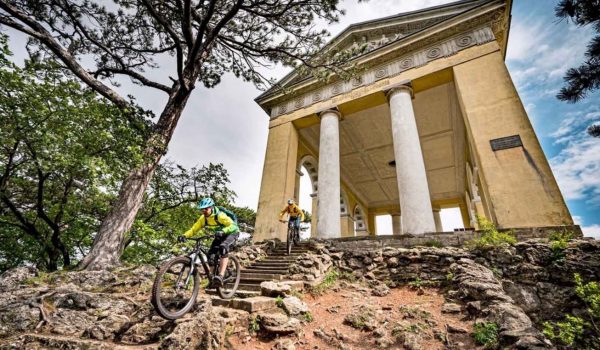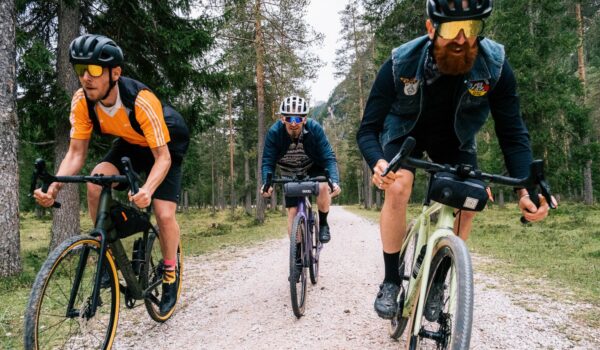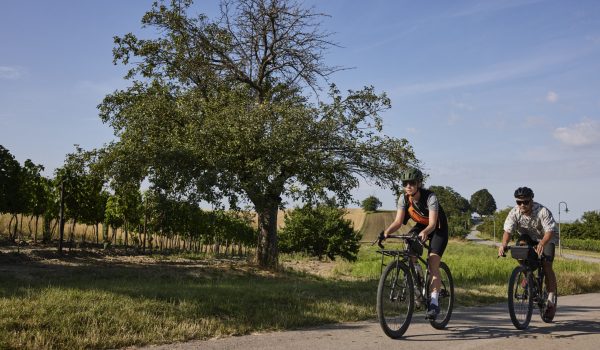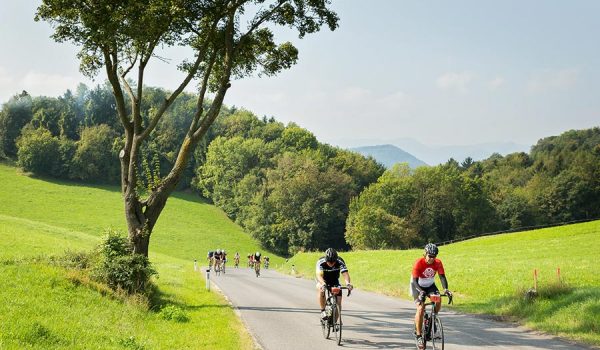Lower Austria (Niederösterreich) is a region brimming with natural beauty, from verdant valleys to towering mountain peaks, serene lakes, and lush vineyards. As the largest state in Austria, it offers an extraordinary array of outdoor experiences that cater to adventurers, nature lovers, and history enthusiasts alike. Each corner of this region is imbued with its unique charm, showcasing not only the stunning landscapes but also a deep connection to Austrian culture and history. Here are the 10 most interesting nature attractions in Lower Austria that will leave you spellbound. And of course, the best way to reach these attractions is to take your own bike or rent a bike from our rental service.
1. Wachau Valley

The Wachau Valley, stretching 40 kilometers along the Danube River between the towns of Krems and Melk, is undoubtedly one of the most captivating landscapes in Austria. This valley is famed for its terraced vineyards, historic castles, ancient monasteries, and quaint villages. The cultural landscape here is so unique and well-preserved that it was designated a UNESCO World Heritage Site in 2000.
One of the most iconic spots in the Wachau Valley is the Göttweig Abbey. An impressive Baroque monastery often referred to as the “Austrian Montecassino.” This 11th-century abbey sits atop a hill, offering panoramic views of the Wachau region. The valley is also famous for its wine production, especially for its Grüner Veltliner and Riesling wines, which are celebrated globally.
Visitors can explore the Wachau Valley in several ways—by cycling along the Danube Cycle Path, hiking through vineyards and forests, or taking a leisurely boat cruise on the Danube River. The Spitz-Dürnstein section is particularly scenic. Its offers views of ruined castles like Aggstein and Dürnstein, where Richard the Lionheart was once held captive.
Interesting Fact: The Wachau Valley is also known for its apricots, or “Marillen,” which are used to make a variety of local specialties, including schnapps, jams, and pastries.
“Wachau Valley wine tasting,” “Göttweig Abbey views,” “Wachau cycling tours,” and “UNESCO sites in Austria.”
2. Ötscher-Tormäuer Nature Park

Known as the “Grand Canyon of Austria,” Ötscher-Tormäuer Nature Park is a spectacular natural reserve that covers 170 square kilometers in the Mostviertel region. At the heart of the park is the Ötscher Mountain, standing tall at 1,893 meters. The park is characterized by deep gorges, rushing streams, and stunning waterfalls such as the Mirafall and Schleierfall, making it a paradise for nature lovers and adventurers.
The Ötschergräben gorge, often referred to as “Austria’s Grand Canyon,” is one of the park’s highlights. With towering cliffs and crystal-clear water, this gorge provides a stunning backdrop for hikers. There are several well-marked trails of varying difficulty levels, including the popular route from Wienerbruck to Erlaufklause, which takes hikers through dense forests, over wooden bridges, and past cascading waterfalls.
Interesting Fact: The area is also rich in fossils and unique geological formations, offering insights into the ancient history of the region. Additionally, the park is home to a diverse array of wildlife, including the golden eagle, red deer, and various species of bats.
“Ötschergräben hiking trails,” “waterfalls in Lower Austria,” “wildlife in Ötscher-Tormäuer,” and “Austrian Grand Canyon.”
3. Semmering Railway and Landscape

The Semmering Railway, built between 1848 and 1854, is not only a masterpiece of civil engineering but also a gateway to one of the most scenic landscapes in Lower Austria. This railway was the first mountain railway in Europe to be constructed with a standard gauge track, and it became a UNESCO World Heritage Site in 1998 due to its significant historical and technical value.
The railway line traverses 41 kilometers of stunning mountainous terrain, featuring 14 tunnels, 16 viaducts, and over 100 stone bridges. The surrounding Semmering landscape is ideal for hiking, with well-marked trails such as the Semmeringbahn hiking path that follows the railway line, offering magnificent views of the viaducts and the surrounding pine forests.
Interesting Fact: The area around Semmering is also known for its historic villas and hotels, which were popular in the 19th century as health retreats for Vienna’s elite. The Hotel Panhans, built in 1888, is one of the most famous and still operates today, offering a glimpse into the region’s luxurious past.
“Semmering Railway UNESCO,” “historic hotels in Semmering,” “Semmering hiking trails,” and “mountain railways in Austria.”
4. Schneeberg Mountain as a Nature attractions in Lower Austria

Schneeberg, meaning “Snow Mountain,” is the easternmost and highest mountain in the Alps, standing at 2,076 meters. It is an iconic destination for hiking, skiing, and mountaineering in Lower Austria. The Schneeberg Railway, known as the Salamander Train, has been ferrying passengers up the mountain since 1897. This cog railway takes visitors up to the Hochschneeberg, where they can enjoy breathtaking panoramic views of the surrounding landscapes, including Vienna on a clear day.
The mountain offers a variety of hiking trails, from easy family walks to challenging summit ascents. For those who reach the summit, the Fischerhütte, the highest mountain hut in Lower Austria, offers traditional Austrian dishes and a chance to rest.
Interesting Fact: Schneeberg is also home to several rare plant species that thrive in its unique alpine environment. Botanists and nature lovers will appreciate the diversity of flora that can be found along the hiking paths.
“Schneeberg Salamander Train,” “Schneeberg summit hike,” “highest mountains in Lower Austria,” and “alpine flora in Austria.”
5. Dürnstein and the Ruins of Kuenringer Castle

Dürnstein, located in the Wachau Valley, is one of the most charming towns in Lower Austria. It is famous for its blue Baroque tower of the Dürnstein Abbey and the ruins of Kuenringer Castle, which sit high above the town. The castle is historically significant as the place where King Richard the Lionheart was imprisoned in 1192 after his return from the Crusades.
The hike up to the castle ruins takes about 30 minutes and offers spectacular views of the Danube River and the surrounding vineyards. The trail is relatively easy and suitable for families. Along the way, you’ll find information boards detailing the history of the castle and the town of Dürnstein.
Interesting Fact: The legend of Richard the Lionheart’s imprisonment is so embedded in the local culture that it inspired countless folk tales, and the annual “Richard the Lionheart Festival” in Dürnstein attracts visitors from all over the world.
“Dürnstein castle history,” “Richard the Lionheart festival,” “views from Kuenringer Castle,” and “historic towns in Lower Austria.” Nature attractions in Lower Austria
6. Hohe Wand Nature Park

Hohe Wand Nature Park is an accessible nature reserve located near Vienna, known for its limestone cliffs, rich biodiversity, and outdoor activities. It is a popular destination for rock climbing, paragliding, and hiking. The Skywalk, a viewing platform that juts out from the cliffside, offers breathtaking views of the surrounding valleys and is a must-visit for any adventurer.
The park features several hiking trails, ranging from easy walks suitable for families to challenging routes for experienced hikers. There are also several themed paths, such as the Geo-Trail, which introduces visitors to the park’s geological features and the diverse flora and fauna of the region.
Interesting Fact: Hohe Wand Nature Park is also home to a wildlife reserve where visitors can see native species such as mouflons, red deer, and various birds of prey in a semi-natural environment.
“Hohe Wand Skywalk,” “rock climbing in Hohe Wand,” “Hohe Wand wildlife reserve,” and “nature parks near Vienna. Nature attractions in Lower Austria
7. Donauradweg (Danube Cycle Path)

The Danube Cycle Path (Donauradweg) is one of Europe’s most famous long-distance cycling routes, running from the Black Forest in Germany to the Black Sea. The Lower Austrian section of the path, which passes through the Wachau Valley, is particularly scenic and ideal for cyclists of all levels. The route meanders along the Danube River, through lush vineyards, charming towns, and historic castles.
The cycling path is well-maintained and offers numerous rest stops, inns, and local taverns where cyclists can enjoy regional specialties and wines. There are also several ferries along the route, allowing cyclists to cross the Danube and explore different parts of the valley.
Interesting Fact: The Wachau section of the Donauradweg is famous for its Heurigen, traditional wine taverns where local vintners serve their latest wines directly from the barrel along with homemade Austrian dishes.
“Danube Cycle Path Wachau,” “best cycling routes in Austria,” “Heurigen in Wachau Valley,” and “Danube River bike tours.” Nature attractions in Lower Austria
8. Lunz am See

Lunz am See is a hidden gem in Lower Austria, located in the Ybbstal Alps. This crystal-clear alpine lake is the only natural lake in Lower Austria and is renowned for its serene beauty and recreational opportunities. Visitors can enjoy a variety of activities, such as swimming, kayaking, fishing, or taking a relaxing boat ride on the lake.
For hiking enthusiasts, there are several trails around Lunz am See that lead to scenic viewpoints. One of the most popular hikes is to the summit of the Dürrenstein, which offers panoramic views of the lake and the surrounding mountains. In winter, the area becomes a haven for ice skating and cross-country skiing.
Interesting Fact: The Seebühne Lunz, a floating stage on the lake, hosts cultural events and concerts during the summer months, creating a magical atmosphere with the lake and mountains as a backdrop.
“Lunz am See activities,” “Seebühne Lunz concerts,” “Dürrenstein hiking trails,” and “natural lakes in Lower Austria.”
9. Mayerling Valley and the Vienna Woods (Wienerwald)
Mayerling Valley, situated within the Vienna Woods (Wienerwald), is not only known for its natural beauty but also its tragic history. It was here that Crown Prince Rudolf of Austria and his lover, Baroness Mary Vetsera, died in a mysterious murder-suicide at the Mayerling hunting lodge in 1889. Today, the lodge has been converted into a Carmelite monastery, where visitors can learn about this intriguing chapter in Austrian history.
The Vienna Woods Nature attractions in Lower Austria themselves are a UNESCO Biosphere Reserve and offer an array of outdoor activities, such as hiking, mountain biking, and bird watching. The area is also dotted with charming villages, ancient monasteries, and vineyards, making it a perfect destination for a day trip from Vienna.
Interesting Fact: The Vienna Woods have inspired many composers and artists, including Beethoven, who composed parts of his famous “Pastoral Symphony” while walking through these forests.
“Mayerling hunting lodge history,” “Vienna Woods hiking trails,” “day trips to Wienerwald,” and “Carmelite monastery Mayerling.”
10. Rax-Schneeberg Group
The Rax-Schneeberg Group, located in the Northern Limestone Alps, is one of the most popular destinations for hiking and mountaineering in Lower Austria. The Rax cable car, which dates back to 1926, is the oldest cable car in Austria and takes visitors up to the Rax plateau. From here, numerous hiking trails lead through alpine meadows, deep gorges, and over rugged mountain ridges.
The area is famous for its alpine huts, such as the Ottohaus and the Habsburghaus, where hikers can enjoy hearty Austrian meals and overnight stays. These huts provide a great base for exploring the surrounding mountains and valleys.
Interesting Fact: The Rax-Schneeberg Group is also a significant historical area for Austrian mountaineering. The first recorded ascent of Schneeberg was in 1573, making it one of the earliest documented mountain climbs in the Alps.
“Rax cable car experience,” “alpine huts in Rax,” “Schneeberg mountaineering history,” and “hiking routes in the Northern Limestone Alps.”
Lower Austria is a region that captivates visitors with its diverse landscapes, rich history, and abundance of outdoor activities. From the cultural allure of the Wachau Valley and the engineering marvel of the Semmering Railway to the tranquil beauty of Lunz am See and the rugged terrain of the Rax-Schneeberg Group, there is something here for every nature enthusiast. Whether you are looking for a relaxing getaway or an adventurous escape, Lower Austria offers a unique blend of natural beauty and cultural experiences that will leave a lasting impression.
With so many remarkable Nature attractions in Lower Austria, it’s no wonder that this region remains a top destination for travelers seeking to explore the beauty and heritage of Austria. Be sure to visit these 10 must-see natural wonders to fully experience the breathtaking scenery and vibrant culture that this region has to offer.


























Follow Us